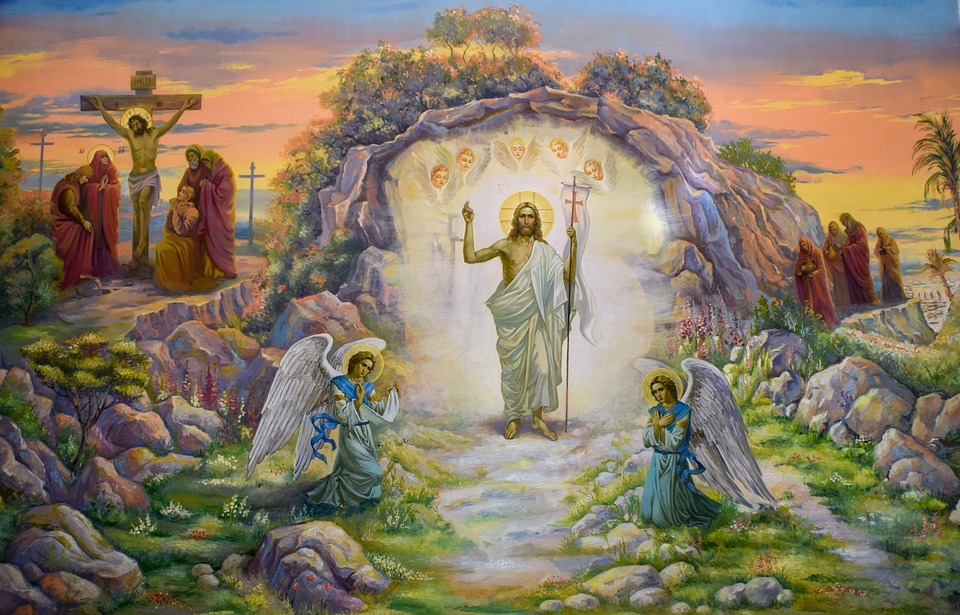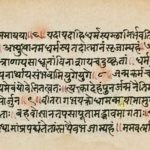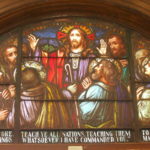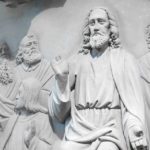There are six main sources in the New Testament for information on the post-resurrection life of Jesus. These are the four Gospels of Matthew, Mark, Luke, and John, The Acts of the Apostles, and the Apostle Paul’s first letter to the Corinthian Church. For information on the resurrection itself, the reader might be interested in this article that discusses the historicity of Jesus rising from the dead.
Each of the four Gospels presents slightly different post-resurrection accounts of Jesus. All of the writers indicate that Jesus made multiple appearances to his followers after the resurrection so it is no surprise that each writer only decided to focus on a few of those encounters. Mark’s Gospel is unique in that while he mentions the resurrection, there are no post-resurrection appearances. All of the earliest manuscripts show that Mark ended after chapter sixteen, verse eight. There was extra material added to the end of chapter sixteen but there are no credible scholars that accept the authenticity of verses nine to twenty.
Rather than a resurrection meeting with Jesus, the women that are seen at the empty tomb in Mark encounter an angel who announces that Jesus is alive. The angel gave them instructions to give to the male disciples about where they could meet Jesus. The women left the empty tomb to report to Peter and the other disciples about their encounter with the angel.
In Matthew’s Gospel, the women found the tomb empty and also encountered angels.
As they left the tomb, however, Jesus met them. They fell at his feet and grasped his ankles. Jesus instructed the women to tell the disciples that he would meet them in Galilee. It was in this final meeting with the resurrected Jesus that Matthew records what has come to be known as “The Great Commission.” Jesus spoke to his disciples and told them, “I have been given complete authority in heaven and on earth. Therefore, go and make disciples of all the nations, baptizing them in the name of the Father and the Son and the Holy Spirit. Teach these new disciples to obey all the commands I have given you. And be sure of this: I am with you always, even to the end of the age.” (Matt. 28:18-20)
Luke’s Gospel presents several meetings with the resurrected Jesus. Luke also shows the women coming to the empty tomb and encountering the angels. The first time someone actually sees the resurrected Jesus is recorded in Luke 24:13-32. This fascinating account has two disciples walking from Jerusalem to the village of Emmaus. As they are walking, the two men are discussing the events of the last few days, Jesus’ crucifixion on Friday and the report of some women earlier that day that they had found the tomb empty and had encountered angels who told them that Jesus was alive.
As they walked and talked, a third man joined them and asked them why they seemed so downcast. One of the two disciples, Cleopas, said, “You must be the only person in Jerusalem who hasn’t heard about all the things that have happened there the last few days.” The unidentified man asked, “What things?”
The two disciples quickly brought the stranger up-to-date on the things that had transpired in Jerusalem.
The stranger then chastised the two disciples for their lack of faith. He then proceeded to take them on a journey through the Scriptures, starting with Moses and going through the prophets, showing them that the Messiah had to suffer and die and then be resurrected. As the three men arrived at Emmaus, the stranger acted if he was going to keep going. The two disciples begged him to come home with them since it was so late in the day.
When the three men sat down to eat, the stranger took some bread, blessed it, broke it, and passed it to the others. At that moment, the two disciples saw that the stranger that they had spent the last several hours with was Jesus. As quickly as they recognized him, he disappeared. One of the two said, “Didn’t our hearts feel strangely warm as he talked with us on the road and explained the Scriptures to us?”
Even though it was late in the day, the two disciples hurried back to Jerusalem to tell the others what had happened. When they got to Jerusalem, the Eleven were buzzing about the risen Jesus. He had appeared to Peter, the leader of the disciples and the one who had denied him. The two men from Emmaus shared about their time with the risen Jesus. As they were telling their story, Jesus appeared in their midst. He chastised them for their unbelief.
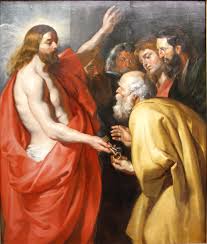 Since seeing someone who has been raised from the dead was not a normal occurrence, the disciples were struggling to come to terms with what they were seeing. Was this a ghost? Were they somehow seeing Jesus’ spirit? Jesus dispelled these concerns. “Look at my hands. Look at my feet. You can see that it’s really me. Touch me and make sure that I am not a ghost because ghosts don’t have bodies, as you see that I do!” (Luke 24:39) He also asked for something to eat and then proceeded to eat some fish. This was really Jesus and he really was alive.
Since seeing someone who has been raised from the dead was not a normal occurrence, the disciples were struggling to come to terms with what they were seeing. Was this a ghost? Were they somehow seeing Jesus’ spirit? Jesus dispelled these concerns. “Look at my hands. Look at my feet. You can see that it’s really me. Touch me and make sure that I am not a ghost because ghosts don’t have bodies, as you see that I do!” (Luke 24:39) He also asked for something to eat and then proceeded to eat some fish. This was really Jesus and he really was alive.
In the Acts of the Apostle, Luke continued to document the risen Jesus’ appearances before his ascension. Luke writes in Acts 1:3, “During the forty days after his crucifixion, he appeared to the apostles from time to time and proved to them in many ways that he was actually alive. On these occasions, he talked to them about the Kingdom of God.” The entire passage can be found here.
In this last encounter with Jesus before he was taken to Heaven, he and the disciples had a meal together and discussed what he expected of them. He expected them to be his witnesses and to take his message throughout the world. This would have been a disturbing idea to the disciples. Preaching to other Jews was fine, but to take Jesus’ message to the non-Jews in “the ends of the earth,” would have been hard to digest. Acts go on to describe some of the reluctance that the disciples had to leave the confines of Palestine.
John’s Gospel also provides several post-resurrection meetings with Jesus.
Jesus first appears to Mary Magdalene at the empty tomb. This is a beautiful story in which Mary saw the angels that are mentioned in the other Gospels. At the same time, she saw a man standing near the tomb who she took to be a gardner. The angels and the “gardner” both ask her, “Why are you crying?” Thinking that he has taken Jesus’ body, Mary says, “Sir, if you have taken him away, tell me where you have put him, and I will go and get him.” The “gardner,” Jesus, then says one word: “Mary.” She immediately recognizes Jesus and falls at his feet, and exclaimed, “Teacher!” As in the other Gospels, Jesus sends her back to the male disciples with news of his resurrection.
Later that same day, Jesus appeared to most of the disciples. Only Thomas was not present with them. John records that they were in hiding because they feared that the Jewish authorities would be coming to arrest them also. Rather, than knocking on the door, Jesus just appeared in their midst. Later on, when the disciples told Thomas about their encounter with Jesus, he made his famous statement, “I won’t believe it unless I see the nail wounds in his hands, put my fingers into them, and place my hand into the wound in his side.” (John 20:25)
Eight days later, Jesus appeared to the disciples again. This time Thomas was present and Jesus addressed him directly, “Put your finger here and see my hands. Put your hand into the wound in my side. Don’t be faithless any longer. Believe!” (John 20:27) Thomas’ response was immediate and dramatic. “My Lord and my God!” He went from doubting to declaring Jesus’ divinity.
John’s Gospel contains one further post-resurrection encounter with Jesus. At some point after the resurrection, Peter and a few other disciples went fishing on the Sea of Galilee. They spent the night trying but caught nothing. As the day dawned, they saw a man on the shore. He called out to them and asked if they had caught anything. When they told him that they had not, he instructed them to throw the net out on the other side of the boat. They followed his advice and the nets were soon filled with fish. A later count showed 153 large fish in the net.
At the moment of the big catch, John realized that the stranger on the beach was Jesus. When he mentioned this to Peter, Peter dove into the water and swam to shore. Jesus had a breakfast prepared on the beach for them of fish and bread. He told Peter to bring some of the fish he had caught to add to the meal.
It was in this meeting with Jesus that Peter was reinstated.
As they talked, Jesus asked him three times, “Simon, son of John, do you love me more than these?” Peter’s answer was, “Yes, Lord, you know I love you.” Since Peter had denied Jesus three times, most scholars see Peter’s three-fold expression of his love for Jesus as his reinstatement to his place of authority among the Twelve.
 One last important passage about the resurrection is found in 1 Corinthians 15:1-9. In this passage, the Apostle Paul recounts a list of some of the people that Jesus appeared to after he was raised from the dead. Paul wanted to make sure the Corinthian Christians understood that their faith was founded on fact. Many people had seen and met with Jesus after his resurrection. Paul went on to argue that if Jesus did not really rise from the dead, our faith is in vain.
One last important passage about the resurrection is found in 1 Corinthians 15:1-9. In this passage, the Apostle Paul recounts a list of some of the people that Jesus appeared to after he was raised from the dead. Paul wanted to make sure the Corinthian Christians understood that their faith was founded on fact. Many people had seen and met with Jesus after his resurrection. Paul went on to argue that if Jesus did not really rise from the dead, our faith is in vain.
As this brief survey has shown, Jesus spent forty days with his followers after his resurrection. They talked together, ate together, and were prepared for Jesus’ eventual departure. The time that they spent with the resurrected Jesus changed the disciples. They went from being scared and from hiding to boldly and publicly proclaim the message of Jesus and his resurrection. All of the disciples, with the exception of John, would eventually die martyrs’ deaths for their proclamation of the resurrection.
In a very real sense, Christianity did not start as a set of beliefs or a list of doctrines. Instead, it was birthed out the greatest event in history. If Jesus rose from the dead, then everything that he said was true. The message of the resurrection is the message of God’s power to change lives and put people back in a relationship with God.

